Welcome to On Verticality. This blog explores the innate human need to escape the surface of the earth, and our struggles to do so throughout history. If you’re new here, a good place to start is the Theory of Verticality section or the Introduction to Verticality. If you want to receive updates on what’s new with the blog, you can use the Subscribe page to sign up. Thanks for visiting!
Click to filter posts by the three main subjects for the blog : Architecture, Flight and Mountains.

Anecdotes : Earning the Summit
I recently had the opportunity to summit Mount Washington in New Hampshire, and the experience brought to light a few aspects of verticality for me. It’s the tallest peak in the Northeast US, famous for it’s erratic weather patterns. As such, it’s been commercialized with a cog railway, auto road, visitor center and museum in order to attract tourist dollars to the park. This makes for an interesting summit experience, which is quite different than a typical mountaintop. Put simply, this is a summit you don’t have to earn by climbing up to it.
“What is the use of climbing Mount Everest? It is of no use. What we get from this adventure is just sheer joy. And joy is, after all, the end of life.”
-George Mallory, English mountaineer, 1886-1924.

A Mountain of Mountains
Check out this illustration from 1832 of the Principal Mountains in the World. It was drawn by John Dower, and it organizes the world’s mountains into a set of mountains, each from a different region in the world. There are five ‘peaks’, including the British Isles, Africa, Europe, America and Asia. These are ordered from lowest to highest, and they are superimposed on top of one another. This makes it quite simple to compare relative heights across continents, and to understand where the highest peaks are in relation to one another.
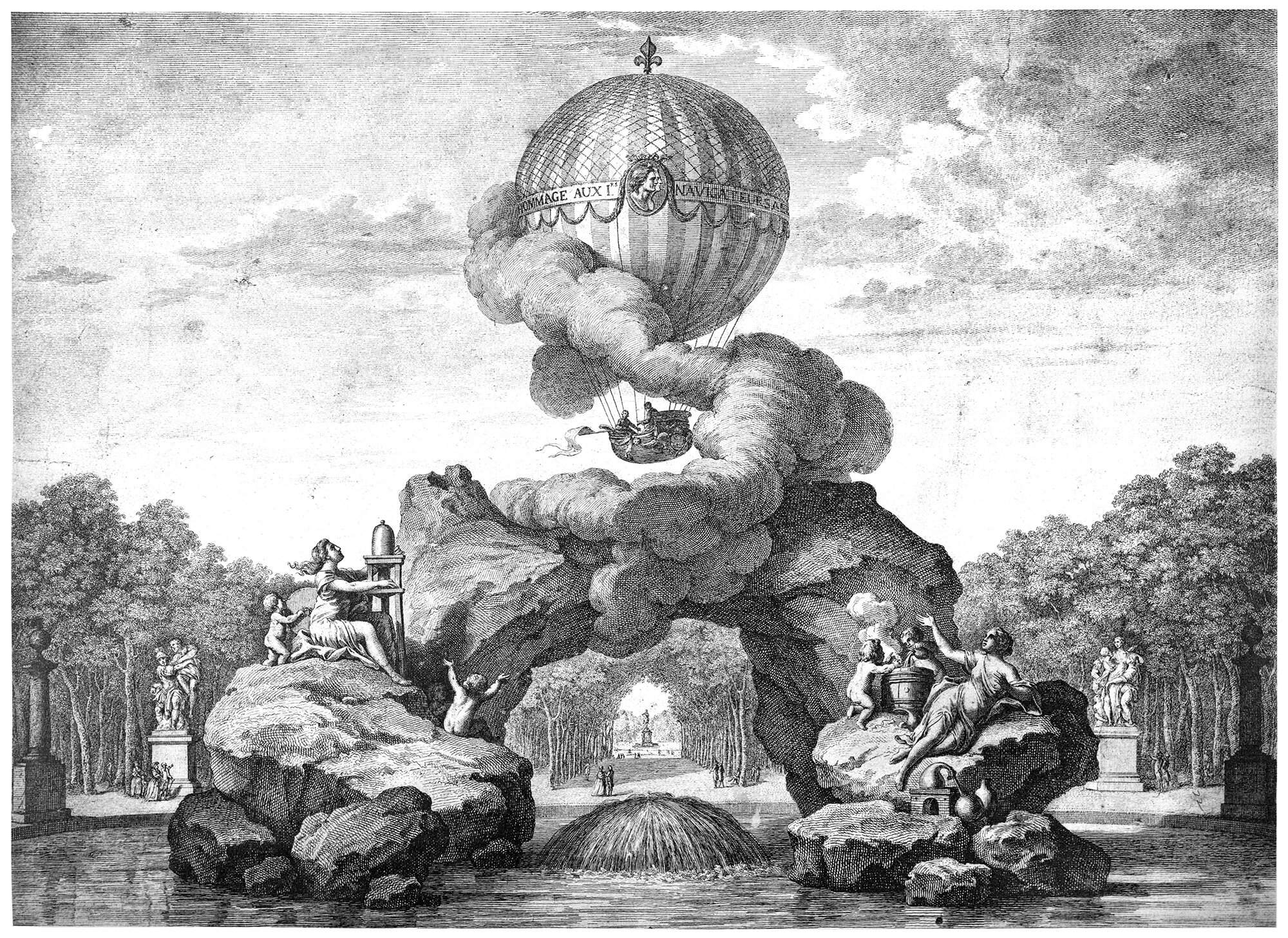
A Monument to the Glory of the First Aerial Navigators
Pictured above is the Projet d'un monument à la Gloire des Premiers Navigateurs Aériens, or the Monument to the Glory of the First Aerial Navigators. It was designed by an anonymous author for a site in the Tuileries Garden in Paris, and it consists of a stone arch placed in a fountain, with a balloon flying above it supported by a cloud-like form.
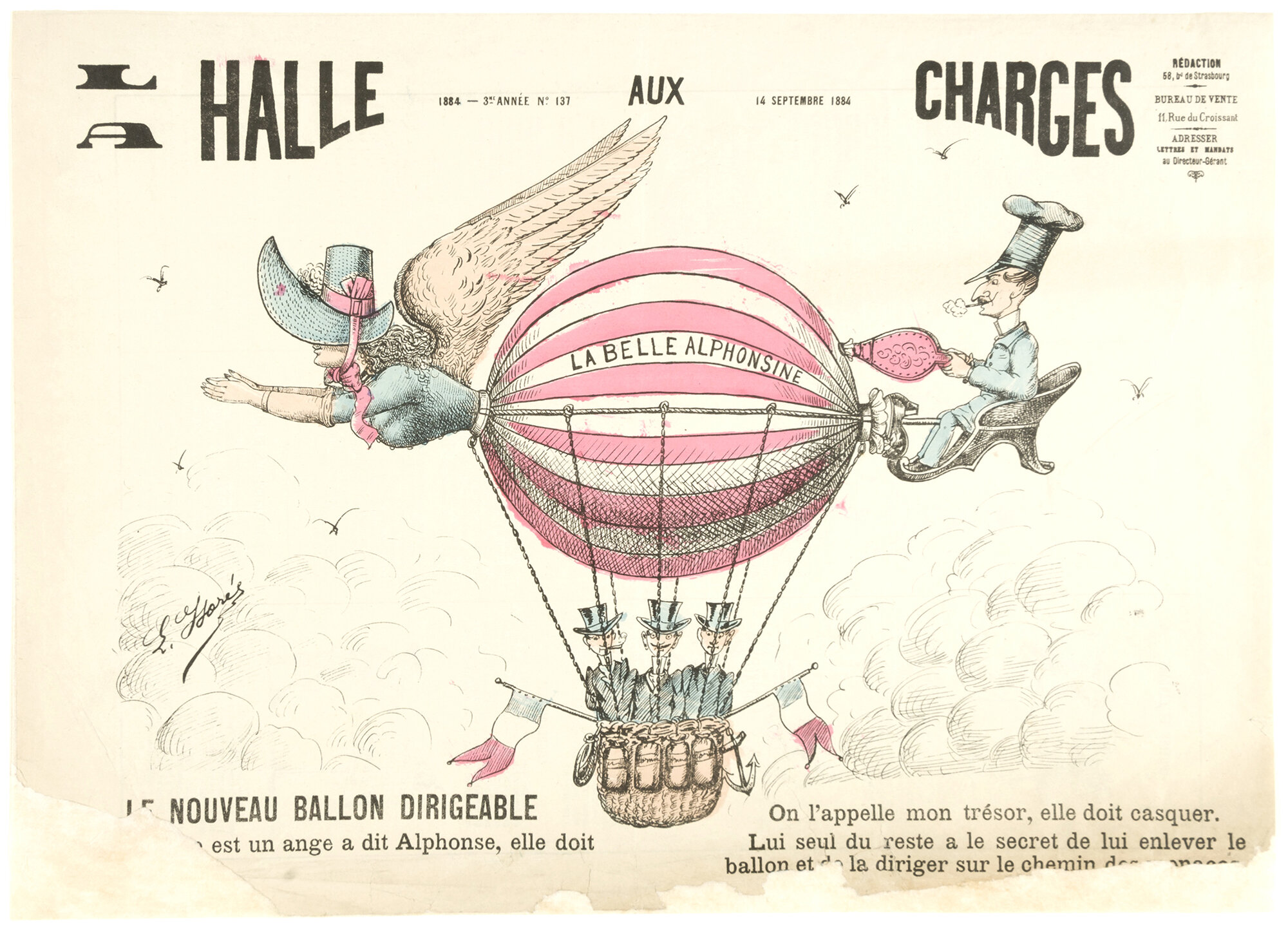
La Belle Alphonsine by E. Florés
In the eighteenth and nineteenth centuries, the human quest for flight was continuously on the public’s mind, and the above illustration is a testament to this. It’s from the front page of a French newspaper called La Halle aux Charges from 14 September 1884. This newspaper was well-known for it’s political caricatures and social commentary, and their choice to put a fictional balloon on their front cover is the perfect representation of what a successful flight means for all those involved.
"I wish that I could fly, into the sky, so very high, just like a dragonfly. I'd fly above the trees, over the seas, in all degrees, to anywhere I please."
-Lenny Kravitz, American singer & songwriter, born 1964.
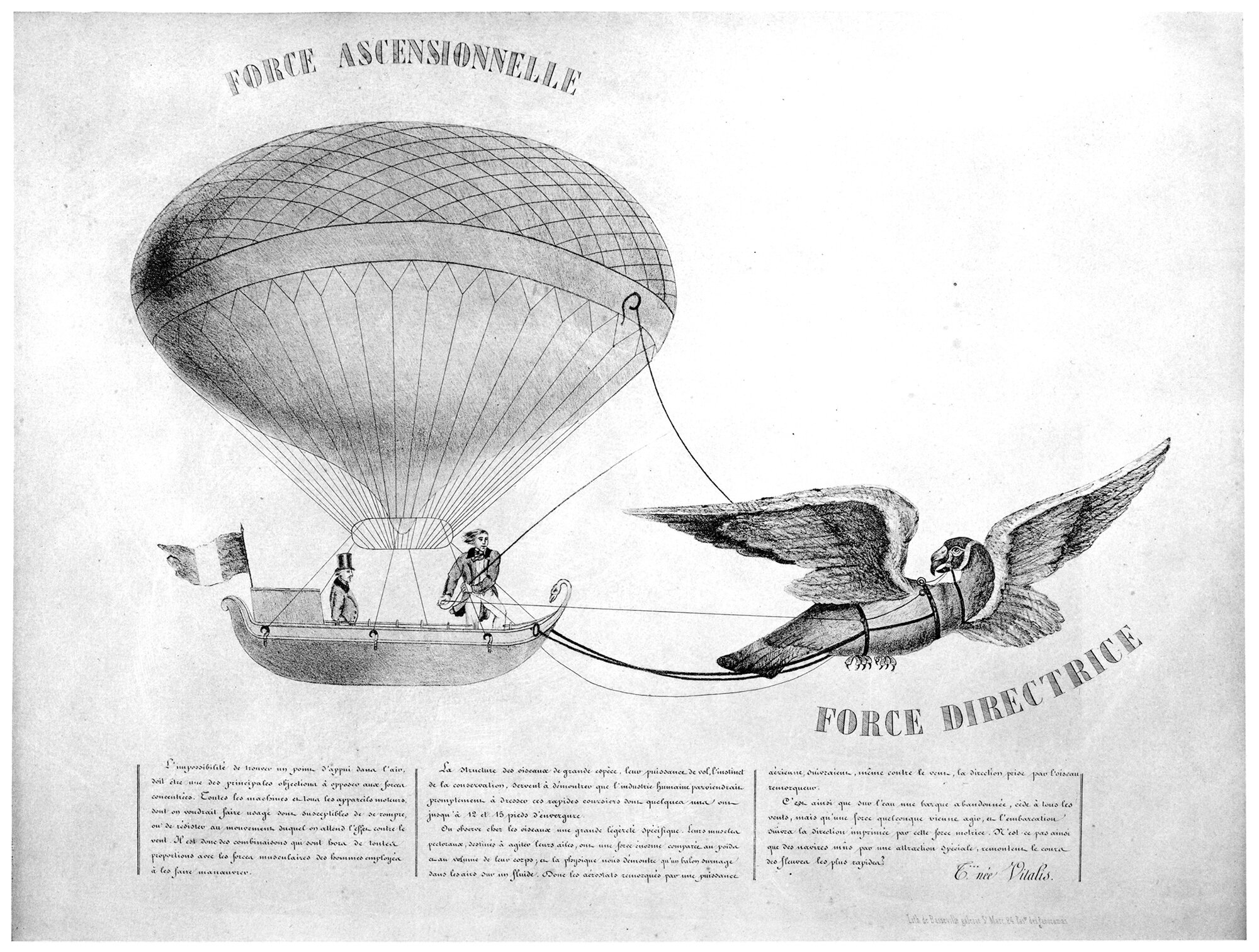
Tessiore’s Balloon Project Towed by a Tame Vulture
Pictured above is a design for a flying machine, consisting of a balloon pulled by a tame vulture. It was originally published in 1845, and was re-published in 1922 in the book L’Aeronautique des origines a 1922. The title of the illustration is Projet de Ballon Remorqué par un Gypaète Spprivoisé, or Project for a Balloon Towed by a Tame Vulture. I’m unable to find any data on the image apart from this, but the content itself is enough to discuss, for obvious reasons.

W.F. Quinby and his Three Flying Machine Patents
Pictured above is a patent drawing for a flying machine, designed in 1869 by Watson Fell Quinby, or W.F. for short. It’s the second of three patents for flying machines that Quinby has to his name. It shows a man flying with three wing-like sails attached to him, along with some rudimentary controls at his hands and feet. As with all of Quinby’s designs, we don’t have any photos to compare the patent drawings to, so we’ll have to assume that if he built any prototypes, they weren’t successful.

Nadar and the Aerial Perspective
Pictured above is Gaspard-Félix Tournachon, better known by the pseudonym Nadar, who was a French photographer in the nineteenth century, just when aeronautics and air travel were entering popular culture. He was fascinated by human flight, and in 1858 he became the first person to successfully take aerial photographs while he was in a balloon. He subsequently commissioned balloons to be designed and built, and he would allow passengers to take flights with him. He was no doubt obsessed with verticality, and his aerial photographs mark a major turning point in the history of human flight.
“O human race, born to fly upward, wherefore at a little wind dost thou so fall?”
-From The Divine Comedy, by Dante Alighieri, Italian poet and philosopher, 1265-1321.
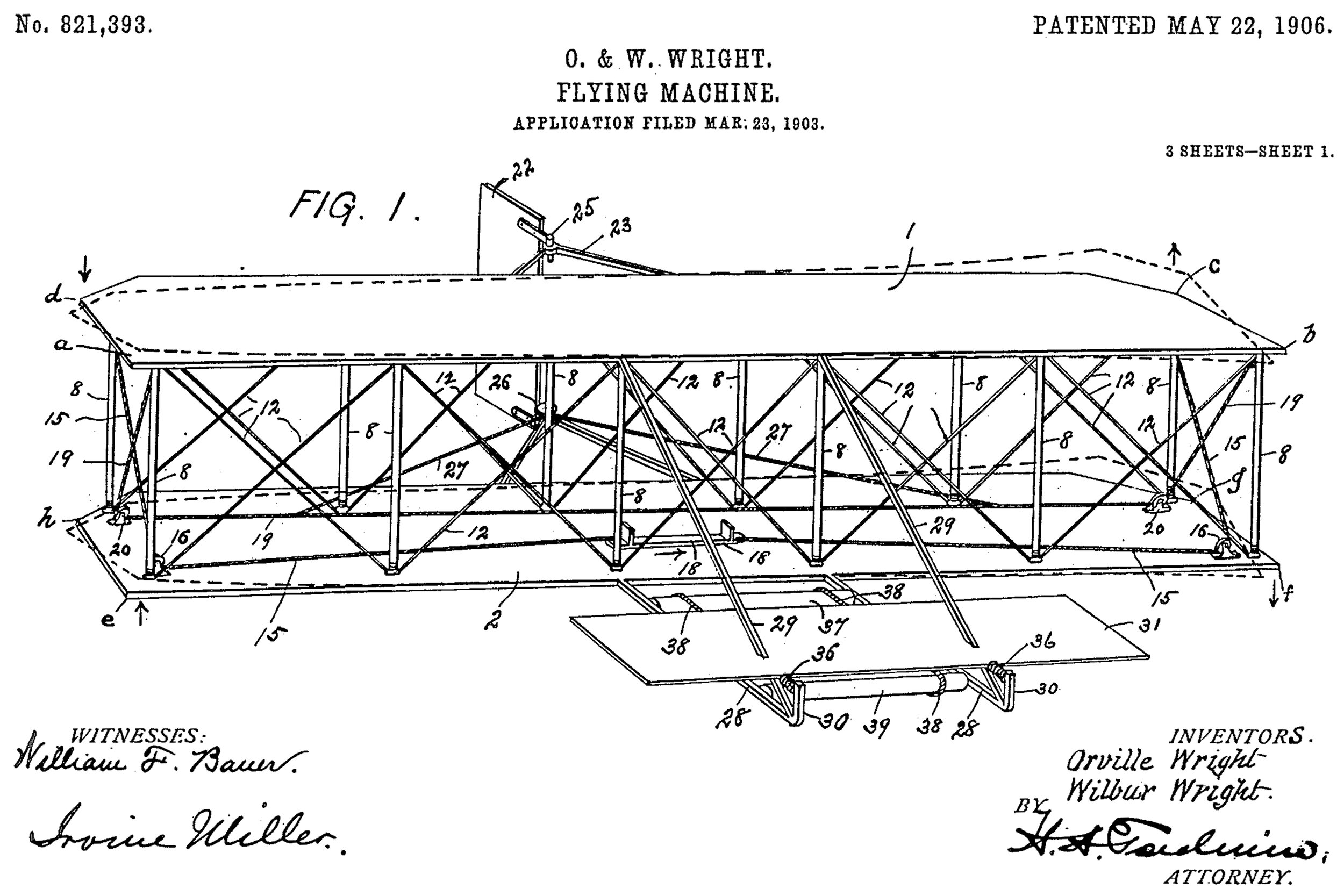
The Wright Brothers’ Flying Machine Patent
I find it fascinating to look at patent drawings of iconic designs throughout history. It’s like you’re getting a glimpse of the design process, before an object enters the public consciousness. Pictured above is a patent for the Wright Brothers’ flying machine, which has since become synonymous with the first ever powered flight. I love how drawings like this strip away any artistic style or vision, and just focus on the object itself. This is a hugely important object that lives on in the history of aviation and human achievement, but it’s rendered here in the most basic, unpretentious way.

Athanasius Kircher’s Turris Babel
The concept of the Tower of Babel is a timeless one, and throughout history it’s attracted the attention and imagination of myriad individuals. One such individual was Athanasius Kircher, a German scholar and polymath who lived from 1602-1680. His 1679 work Turris Babel explores the concept of building a tower that would reach Heaven, and it was accompanied by a few etchings of such a building.

Flying Carpets and the Power of Flight
Flying carpets are the things of folk tales and fantasy. They are magical objects with the power of flight, and anyone who owns one has considerable power over those who don’t. They can quickly transport their owners across the land at great speeds, and they allow their owners to achieve verticality. Here’s a look at the folk tales that established the myth of the flying carpet.
“The mountains are calling, and I must go.”
-John Muir, Scottish naturalist and mountaineer, 1838-1914

The Isolation of Flight
Have a look at the above illustration. It shows an airship high up in the clouds, isolated and alone up in the sky. This view encapsulates the idea that humans are surface-dwellers, and we’re not built for a life in the clouds. Throughout our history, we’ve spent untold amounts of time and energy trying to escape the surface of the earth, but the reality of such an escape is so foreign to our needs, that it creates a conflict within us.
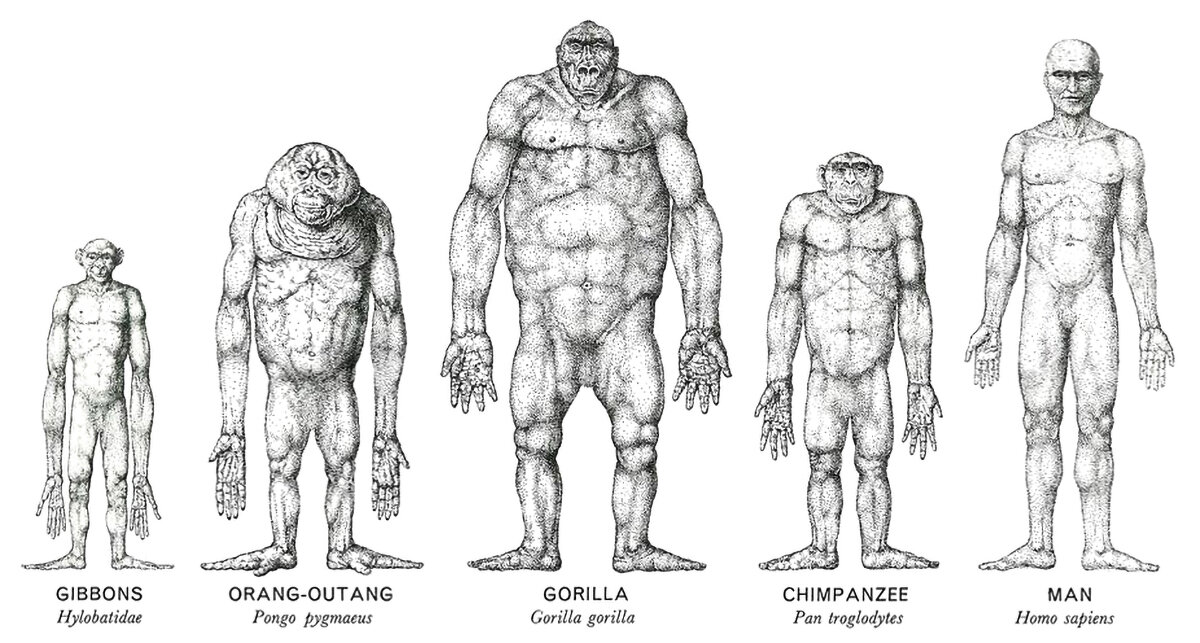
A Comparison of Apes and Man
I’ve been watching a few documentaries on chimpanzees lately, and I’m continuously struck by how similar we humans are to our ape cousins. Our body language and social interactions closely relate, as well as our physical bodies. The major distinction between us and our ape cousins is that we walk upright on two legs. The above illustration caught my eye because It compares the human body to other members of the hominoid family, much like a police lineup. This approach is intriguing, because it shows everyone standing upright on two legs. This, along with removing all hair from the bodies, allows for an easy comparison between the species.
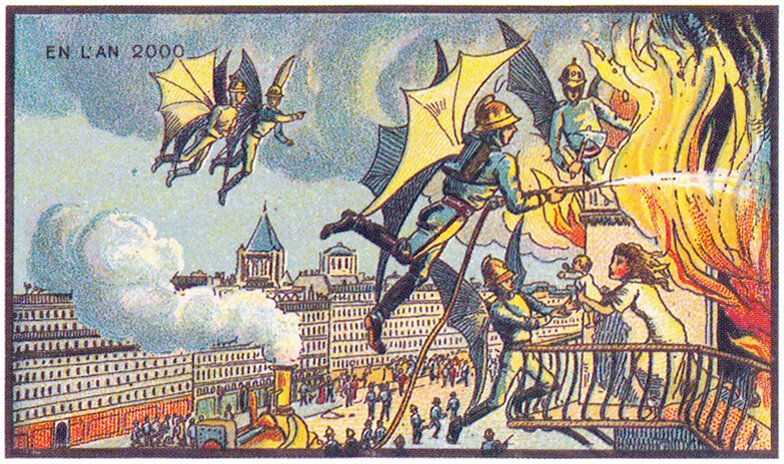
En L’An 2000 : In The Year 2000
Imagine a future where flight is commonplace, and the skies are full of flying people, including police officers, fire fighters, postman, and countless others, zipping around above our heads. That’s what a group of artists led by Jean-Marc Côté dreamed up in 1899 when asked to imagine light-hearted inventions that would contribute to the future. The result was a series of nearly 90 vignettes called En L’An 2000, which means In the Year 2000. The pieces were originally printed as cigarette cards, and later made into postcards. They include a variety of subjects, with a distinct focus on flight and flying machines.
“Towers have always been erected by humankind - it seems to gratify humanity’s ambition somehow and they are beautiful and picturesque.”
-Frank Lloyd Wright, American architect, 1867-1959

Tito Livio Burattini’s Flying Dragon
The above sketch is by Italian engineer Tito Livio Burattini, drawn sometime between 1647 and 1648. At first glance, it’s hard to reconcile a sketch of a flying dragon with a serious proposal for human flight, but Burattini had spent quite a bit of time researching flight, and the sketch was part of a larger treatise on the subject. It was titled Ars Volanti, and throughout the text Burattini wrestled with the idea of flight and how it may be achieved.
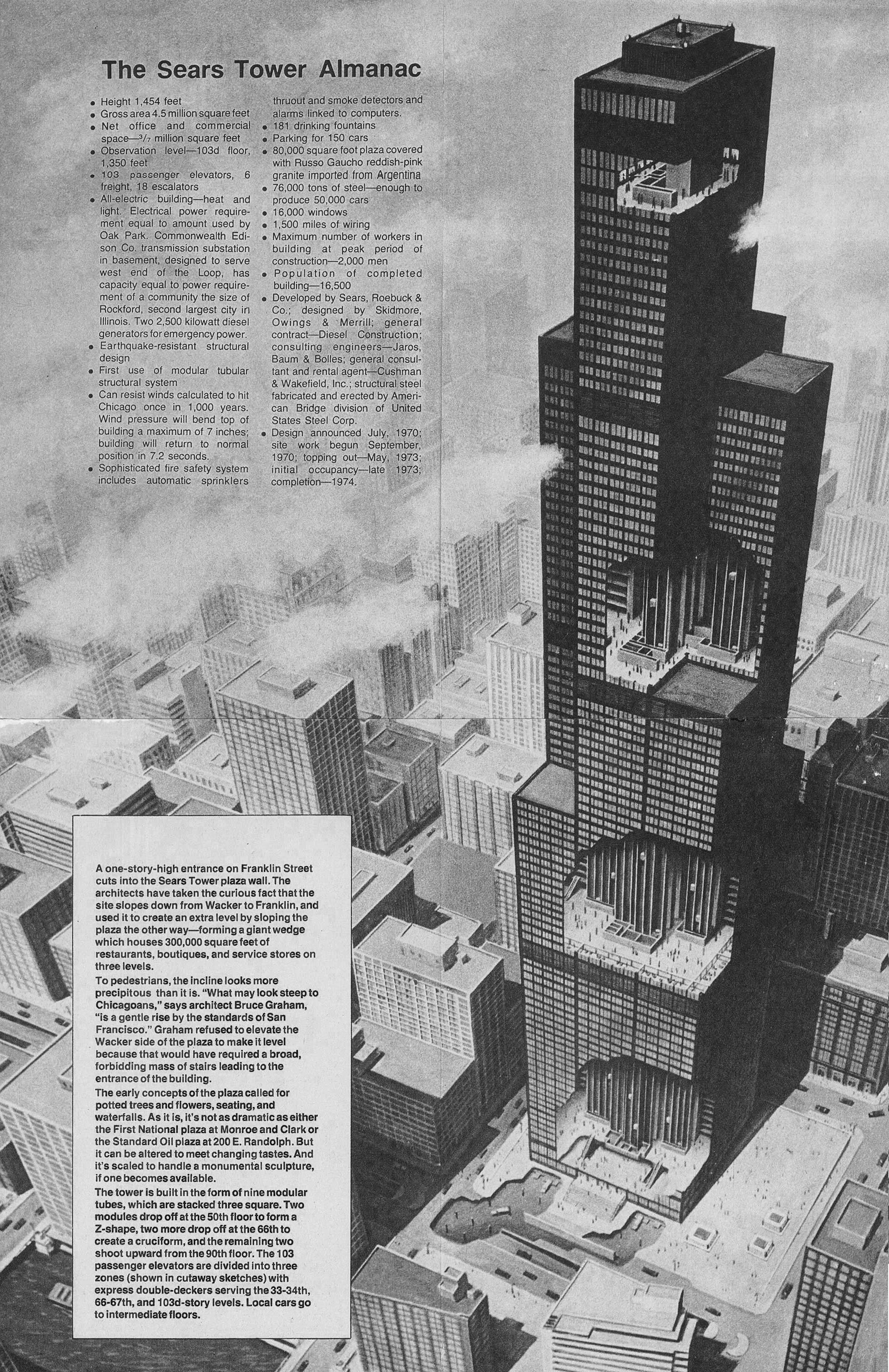
The Original Flat-topped Sears Tower
The above illustration shows the original design for the Sears Tower in Chicago, along with a bunch of factoids related to the scale of the building. Upon first glance, the first thing that stood out to me was the flat roof and lack of the building’s now-iconic antennae. As with most skyscrapers of this size, the building feels quite different without the white spires that are now so closely associated with the skyscraper. Similarly, imagine the Empire State Building without it’s spire, or the John Hancock Center without it’s antennae. It’s just not the same.
